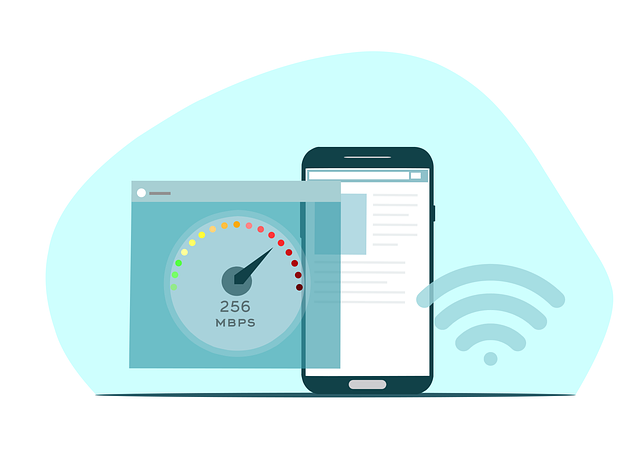The Internet, short for “interconnected network”, is a global network of computers and other electronic devices interconnected through various communication technologies.
It allows the exchange of information, data and communications around the world. The Internet enables users to access a wide range of resources, including websites, email, files, and other online services. What is Internet? Ans.

The Internet functions through a decentralized system where computers, servers, and other devices are connected through a complex web of networks. This network of networks allows information to be transmitted in the form of data packets, which are small units of data. The Internet Protocol (IP) is the major protocol that controls the addressing and routing of these data packets.
Major components of the Internet include:
Web:
Users can navigate between these documents using hyperlinks.
E-mail:
Electronic mail (email) allows users to send and receive messages and files over the Internet. It is a widely used communication tool.
file transfer:
File Transfer Protocol (FTP) and other file-sharing methods enable the transfer of files between computers over the Internet.
social media:
Social media platforms facilitate online social interaction and sharing of content between users.
Search engine:
Search engines help users find specific information on the Web by indexing and organizing content.
online services:
Various online services, such as cloud computing, online storage, streaming media, and more, contribute to the functionality of the Internet.What is Internet?
who invented the internet?
The development of the Internet involved the contributions of many individuals over time, and was not the work of any single inventor. However, key personalities and milestones played important roles in shaping the Internet as we know it today. Here are some important contributors:
ARPANET (1969):
The precursor to the modern Internet, ARPANET, was developed by the Advanced Research Projects Agency (ARPA) of the United States Department of Defense. In 1969, researchers at UCLA, Stanford Research Institute, UC Santa Barbara, and the University of Utah linked computers to create ARPANET node-to-node communications for the first time.
Tim Berners-Lee (1989–1991):
British computer scientist Tim Berners-Lee is credited with inventing the World Wide Web. In 1989, he proposed the concept of a system that would use hypertext to allow researchers to share and update information. They implemented the first successful communication between a Hypertext Transfer Protocol (HTTP) client and server in 1990, and the first website went live in 1991.
Vinton Cerf and Robert Kahn (1970s):
Often referred to as the “Fathers of the Internet”, Vinton Cerf and Robert Kahn developed the Transmission Control Protocol (TCP) and the Internet Protocol (IP), which are the fundamental protocols that form the basis of the Internet’s communications system.
Paul Baran (1960):
RAND Corporation researcher Paul Baran developed the concept of packet switching, a fundamental technique for data transmission in computer networks. Packet switching is a key component of how data is transmitted over the Internet.
These are just some of the many contributors to the development of the Internet.What is Internet?
How does the Internet work?
The Internet is a complex and decentralized system that works through a series of interconnected networks, enabling the exchange of information and communications around the world. The following is a simple explanation of how the Internet works:
Devices and Users:
The Internet connects various devices such as computers, smartphones, tablets, servers and more. Every device connected to the Internet has a unique address known as an IP address.
Internet Service Provider (ISP):
Internet service providers are companies that provide access to the Internet to individuals and organizations. ISPs use different technologies, such as DSL, cable, fiber-optic, or wireless connections, to connect users to their networks.
Data transmission:
When you send or request data over the Internet, it is broken into smaller units called packets. Each packet contains both the actual data being transmitted and metadata, including the source and destination IP addresses.
Protocol:
The Internet relies on a set of protocols to facilitate communication and data exchange. There are two major protocols:
Internet Protocol (IP): Assigns unique IP addresses to devices and enables the routing of data packets.
Transmission Control Protocol (TCP): Manages the reliable delivery of data by establishing and maintaining connections between devices.
Routing:
Data packets travel over the Internet through a process called routing. Routers are devices that examine the destination IP address of each packet and determine the most efficient route for it to reach its destination. The Internet is a network of networks, and routers at different points help direct data between them.
Domain Name System (DNS):
Humans find it easier to remember domain names (such as www.example.com) than IP addresses. The domain name system translates domain names into IP addresses, allowing users to access websites using user-friendly names.
Web Server and Client:
Websites and web applications are hosted on servers. When a user requests a web page, their device acts as a client and sends the request to the server. The server processes the request and sends the requested data, usually in the form of a web page, back to the client.
World Wide Web (WWW):
The World Wide Web is a system of interconnected documents and resources that are accessed using a web browser. HTTP (Hypertext Transfer Protocol) is commonly used for communication between web browsers and servers.
Firewall and Security Measures:
Firewalls and various security measures are in place to protect against unauthorized access, cyber threats, and to ensure the integrity of data transmitted over the Internet.What is Internet?
How to check internet speed?
To check your Internet speed, you can use online speed test tools that measure the download, upload, and ping (latency) speed of your Internet connection. Here’s a step-by-step guide:
Select Speed Test Website:
Some popular options include:
Ookla Speedtest (www.speedtest)
Fast.com (www.fast.com)
Google speed test
Connect with your network:
Make sure your device is connected to the network you want to check the speed of. If you are on Wi-Fi, ensure a stable connection.
Close background applications:
To get more accurate results, close any unnecessary applications or programs that use the Internet on your device.
Visit Speed Test website:
Open your web browser and visit the website of your chosen speed test tool.
Start Speed Test:
Most speed testing websites have a “Start” or “Go” button to begin the test. Click this button to start the speed test.
Wait for the test to complete:
Speed tests will typically measure your download speed, upload speed, and ping. It may take a minute or two for the test to complete. During this time, your device is sending and receiving data from the speed test server.
Review Results:
Upload speed is the rate at which data is transferred from your device to the Internet, and ping is the round-trip time for data to travel from your device to your device. Measures. Server and back.
Interpret the results:
Download Speed: This is the most relevant speed for activities like streaming videos, downloading files, etc.
Upload speed: Important for tasks like uploading files, video conferencing, and online gaming.
Ping/Latency: Lower ping values are better, especially for online gaming and real-time communication.
what is my internet speed?
I’m sorry for any confusion, but I do not have the ability to directly test or measure your internet speed. You can follow the steps mentioned in the previous response to check your internet speed using online speed test tool. Go to one of the recommended websites like Ookla Speedtest, Fast.com or use Google’s Speed Test by searching “speed test” on Google. Use the.
Performing a speed test will give you information about your download speed, upload speed and ping. If you have any concerns about your Internet speed, you may also want to contact your Internet service provider for assistance.

internet speed test?
To test internet speed, you can use one of the popular online speed test tools. Here are step-by-step instructions for using Ookla Speedtest, one of the widely used speed testing services:
Go to Ookla Speedtest:
Open your web browser and visit the Ookla Speedtest website www.speedtest.
Start Speed Test:
Once on the website, you will usually see a large “Go” or “Start Test” button. Click on this to start the speed test.
Wait for the test to complete:
Speed test will measure your download speed, upload speed and ping. This process may take a minute or two as your device communicates with the Speedtest server.
Review the results:
Once the test is complete, Then your upload speed is the rate at which data is transferred from your device to the Internet, and ping is the speed at which data travels between your device and the Measures round-trip time. Server.
Interpret the results:
Download Speed: This is important for activities like streaming videos, downloading files, etc.
Upload speed: Important for tasks like uploading files, video conferencing, and online gaming.
Ping/Latency: Lower ping values are better, especially for online gaming and real-time communication.
Are you interested in this topic :